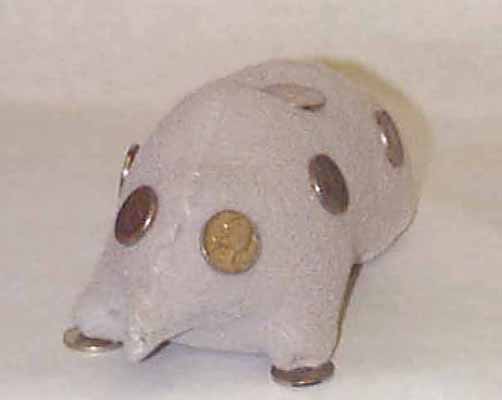Nickel by John Kavanaugh |
|
|
The element I chose was nickel. The reason I chose nickel was because I thought I knew enough about it, but boy was I wrong. Nickel is a very interesting element. It is a white metallic chemical element that is not only worth five cents, but is used in alloys. Metallic means that it is very shiny. Nickel has an atomic number of 28. This means it has 28 protons. The atomic weight of nickel is 58.69, and the chemical symbol is Ni. Nickel is magnetic and does not rust very easily. Nickel has many different uses. It was once used by the Chinese about 2,000 years ago. Why they used it, I couldn't tell you. Some uses for nickel was that it was hammered into sheets or made into a wire. Did you know that one pound (or 0.4 kilograms) of just pure nickel could be made into a wire that stretched out about 80 miles (or 130 kilometers) long. Pure nickel was isolated by Axel Cronstedt, a Swedish scientist, in 1751. Here are some industrial uses for nickel. Nickel is used in many different places because of its ability to resist corrosion. It is used in structural work and in electroplating. Nickel peroxide is a nickel compound that forms the active material of the positive electrode in the Edison storage battery. It is also used in the nickel-cadmium storage battery. Nickel is used to help aid certain chemical reactions by catalysis. During chemical reactions, nickel does not change in any way therefore enabling you to use it over and over again. It is used as a catalyst in a process called hydrogenation. Hydrogenation can be used to make solid vegetable oils for cooking. During hydrogenation, the nickel can cause some of the organic compounds to combine with hydrogen to form new compounds. I believe that largest use for nickel is as an additive to cast iron and steel. These are two very sturdy and hard materials. Nickel can make iron a lot easier to form objects with, and once again can help prevent rusting or corrosion. A lot of manufacturers use nickel combined with steel alloy to make parts for machines. Invar is an alloy of nickel, iron , and other metals. It is used to make meter scales and pendulum rods. It does not expand or contract a lot even if it is very hot or very cold. Another alloy of nickel is monel metal. It is used to make sheet metal. It has a very high resistance to corrosion. The last alloy of nickel is nickel silver. It is used in tableware. I like nickel a lot because of its shine. Not to mention the fact that a nickel is worth five cents. Now, a mole is a furry little animal that... wait, that is not the right kind of mole. The kind of mole we are talking about is a unit we use in chemistry. It measures the amounts of chemicals that take part in a chemical reaction. One mole contains 602,257,000,000,000,000,000,000 atoms, molecules, or ions. In our class, we just say 6.02x10^23. It is a lot easier that way. In honor of the Italian physicist Amedeo Avogadro, they called that number, Avagadro's number. The mole is one of the base units in the metric system of measurement. The metric symbol for a mole is mol. The formula weight of a substance is the same as the weight, in grams, of one mole of any substance. This concludes my report on the element nickel and a mole. |
